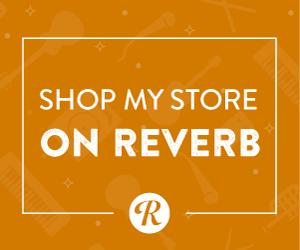Grab a pair of your favorite drumsticks and snuggle up next to your Snare drum or practice pad ... it's time for The Rebound Game! If you've got a mirror near by, sit or stand in front of it, watch your technique and grip as you develop control over your free-stroke, bounce and rebounds.
How to Play
Start with your dominant hand. With a drumstick in hand, play one stroke on the drum or practice pad, catching it when it rebounds. Do it again, and again, and again for several minutes. Next, drop the stick, making one stroke, but allow it to bounce twice before you catch the stick; you should hear two notes. Do it again, and again for several minutes. Now play three notes by allowing the stick to bounce three times before you catch it. Got it? Work your way up to as many bounces as you can get with your dominant hand playing one stroke. Now switch hands and do the same thing with it.
Goal of the Game
Being able to control the drumstick(s) in such a way that you determine how many bounces take place ... but ONLY using ONE downstroke with the stick. Work your way up to at least 8 or 9 bounces per stroke, per hand. The more bounces you get, the closer and softer they become ... so you'll have to count fast!
Rules of the Game
- Stay Relaxed; probably the most important rule for the entire game. Breathe through the strokes and don't allow any part of your body to become tense or contorted. No grimacing, slouching, or sticking out the tongue. Just think about throwing the stick.
- Catch the Stick means that you will use your fingers to close around the stick so that it no longer pivots off your fulcrum. You can just lift you hand up to stop the bounces, but you're not learning to control the bounces that way ... which is what the Game is all about.
- Listen and Focus; make sure that you can really hear and count the bounces. Don't try to press or buzz the drumstick.
- No Finger Tapping! By this I mean that you should not use your fingers to assist in the bounces by tapping against the stick. It's a valid technique, but it's not a part of The Rebound Game.
Game Secrets
The more you relax your fulcrum (just enough so that you don't lose the stick), the more bounces you'll be able to play. Think of how you bounce a ball. The more you allow the ball to move (up & down only), the more bounces it will get. Restricting the height of which the ball (or drumstick) can bounce will only reduce the number of bounces.
By applying slight pressure at the fulcrum and allowing the hand to slowly move down with each sequential bounce, the drumstick can be controlled for eveness of sound. Remember the wrist should only make one main stroke; everything else is bounce.
Game Variations
- Alternate between hands, allowing the drumstick to perform 4 main strokes before moving on to the other hand. Continue with this as you progress through the bounce sequence. In other words, the right-hand stick would play 2, 2, 2, 2 bounces, then the left stick would play 2, 2, 2, 2 bounces. Then the right stick would play 3, 3, 3, 3; left stick plays 3, 3, 3, 3. Right plays 4, 4, 4, 4 ... and so on.
- Try the entire sequence of 2's, 3's, 4's ... all the way up to 9's ... but use Flat Flams (French Flams). A Flat Flam is when both sticks strike the same drum at the very same time. On a keyboard instrument these are known as Double Stops. Make sure that the sticks bounce together; clean and open.
- Find a drum buddy and see who can go the furthest in the sequence. You can take turns counting for each other, making sure that the bounces are audible and clean before moving on to the next level. Or each of you could play the right hand sequence, one after the other, before moving to the left hand ... and so on.
- Play on a variety of surfaces: Snare Drum, Practice Pad, Wood Block, Ride Cymbal and Floor Tom. If you can play The Rebound Game on all of these surfaces, you will have developed some killer technique!
- Once you can play the Rebound Game in it's original format, start using your fingers to assist in controlling the bounces. This really comes in handy when you don't want the velocity of the stick to die down, thus causing the bounces to become cluttered or too quiet. This is a great performance technique.
- The list is endless ... come up with some of your own!
Remember, cheating at The Rebound Game only cheats yourself ... so don't even think about doing it!
I highly recommend that you play The Rebound Game every day for the rest of your life ... well, at least for a number of months, until you really see your improvement.
Have fun, stay loose and enjoy!




